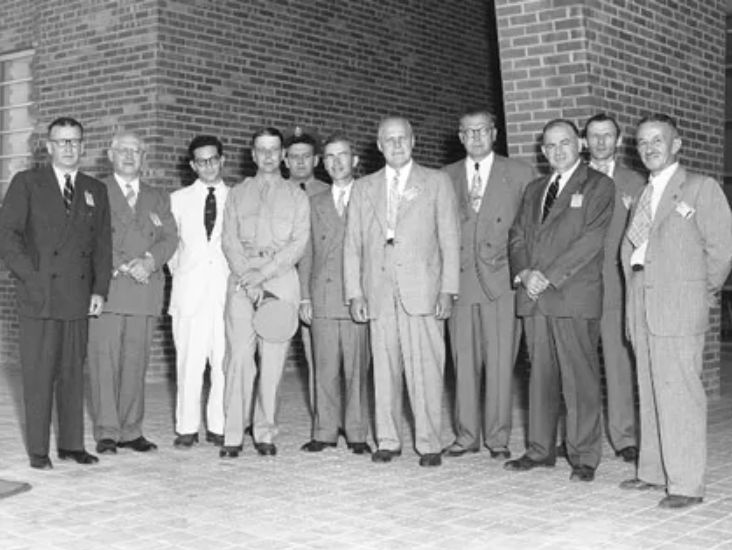1940s
Creating a nuclear weapons ordnance engineering lab
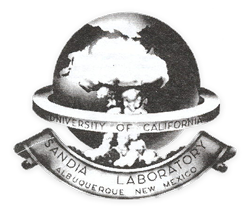
Sandia’s first logo
1945
July 12, 1945
Site selected for newly established Z Division of Los Alamos
Sandia’s forerunner, the new division gathered the ordnance engineering, testing, assembly, and military liaison activities into one group. Jerrold Zacharias was placed in charge of the new division. The first Z Division sub-group began moving to the new site near Albuquerque in September.
The site selected for Z Division was part of land acquired by the U.S. military in January 1941 to establish a training facility for bomber pilots, as well as a training center for aircraft mechanics and air depot personnel. The Air Depot Training Station, referred to as Albuquerque Army Air Field and located in the area that later became Sandia, was established in May 1942; the program ended in 1943 and a convalescent center was established on the site in mid-1944. On July 14, 1945, the Corps of Engineers requested transfer of jurisdiction of Albuquerque Army Air Field from the Air Technical Service Command to the U.S. Engineers, Manhattan District. The transfer was effective on July 21, 1945; the site was subsequently referred to as Sandia Base.
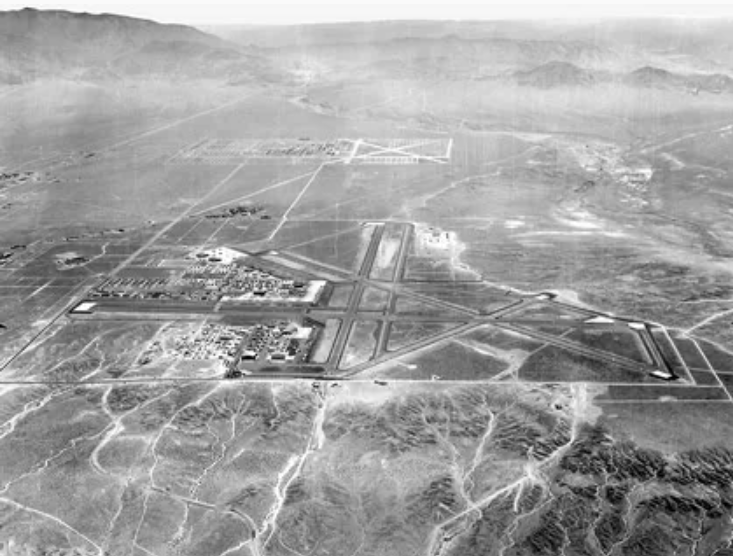
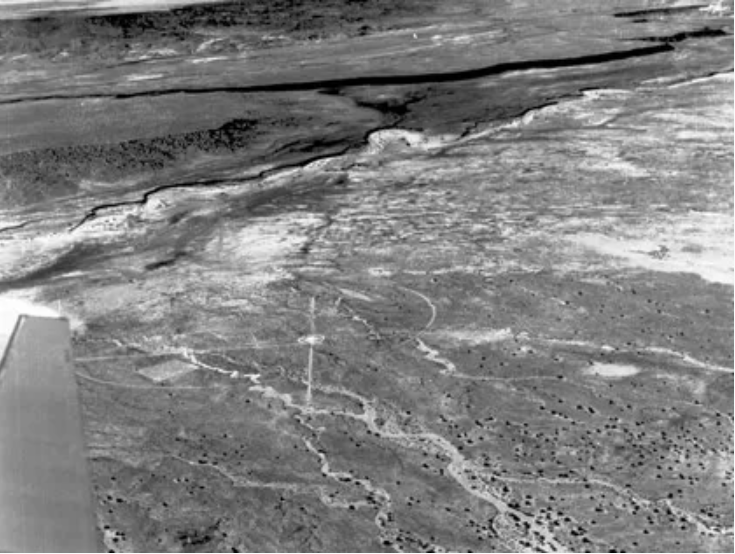
September 19, 1945
Aerial survey of practice bombing range west of Los Lunas, New Mexico
The site was selected for Z Division use, lease arrangements made, a ground survey conducted and, by December, the field test group was setting up equipment at the Los Lunas test range.
October 17, 1945
Roger Warner named leader of Z Division when Jerrold Zacharias returned to MIT
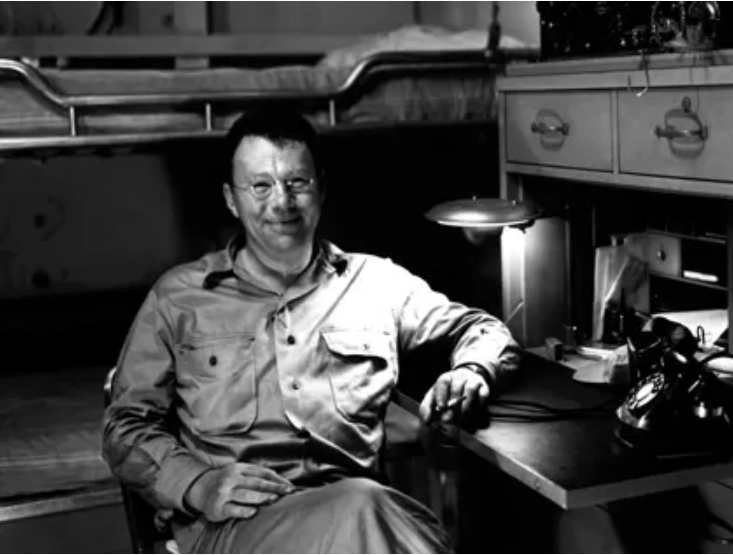
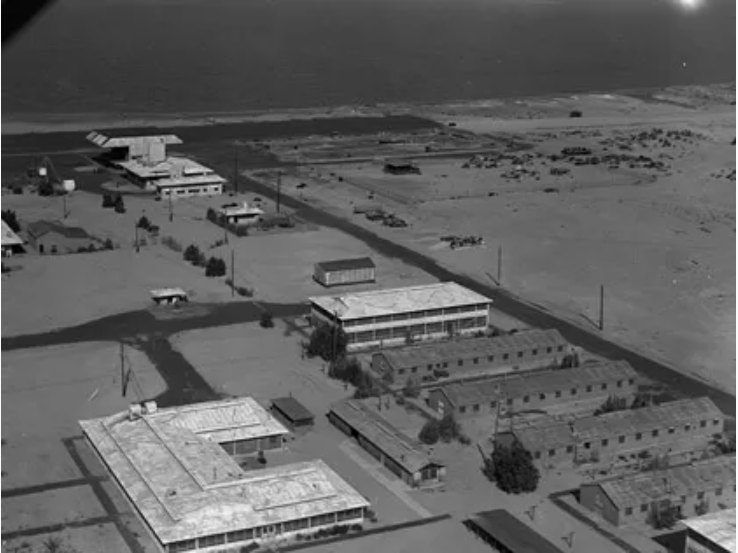
December 10, 1945
Request for Manhattan Engineer District to use Salton Sea Test Base
A formal request was made for the Manhattan Engineer District be allowed to use the Salton Sea Test Base in the post-war period. Sitting some 200 feet below sea level and offering excellent testing weather for most of the year, the Salton Sea site allowed Z Division to test ballistic performance in dense, sea-level atmospheric conditions. In June 1946, the U.S. Navy’s buildings at the site were transferred to the U.S. Army for use as a bombing range by Z Division. Sandia used the site until 1960.
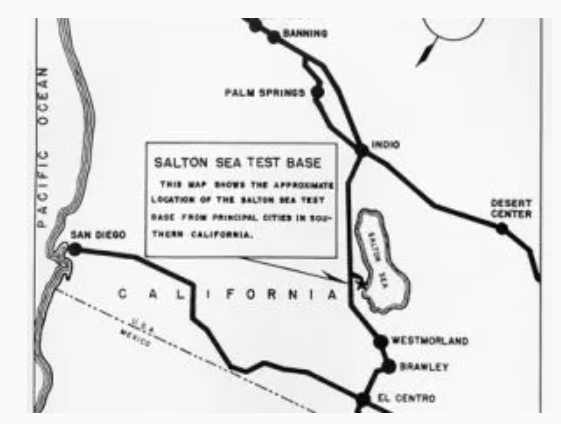
1946
June 30, 1946
First postwar nuclear tests done by Z Division
Z Division testing & ordnance assembly groups supported Operation Crossroads, the first postwar nuclear test series. Crossroads included two shots—Able, an airdrop (6/30/1946), and Baker, an underwater shot (7/24/1946). These were weapon effects tests, not tests of new weapon designs. Los Alamos found out about the planned test in December of 1945 and began preparations. The members of the Z Division assembly are seated in the photo, in front, from left: Phil Dailey, Kenneth O. Roebuck, Arthur Machen, Ira “Tiny” Hamilton, Bryan Arthur. Back row: Roger S. Warner, Major Robert L. Roark, Colonel Jack Sutherland seated, Glenn Fowler, Alvin Van Vessem, William O. McCord, Gene Eyster.
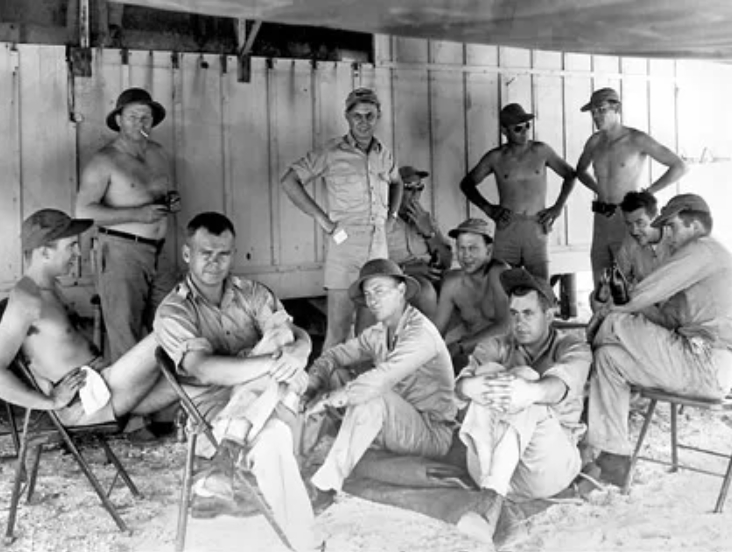
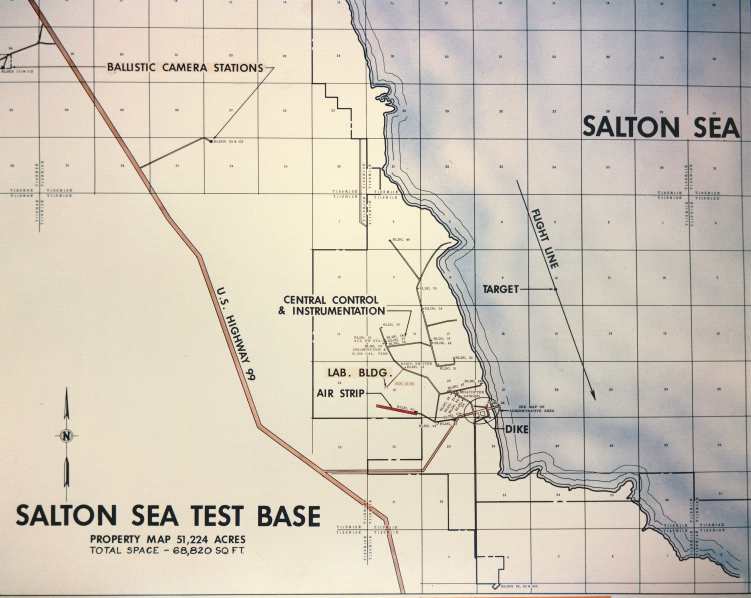
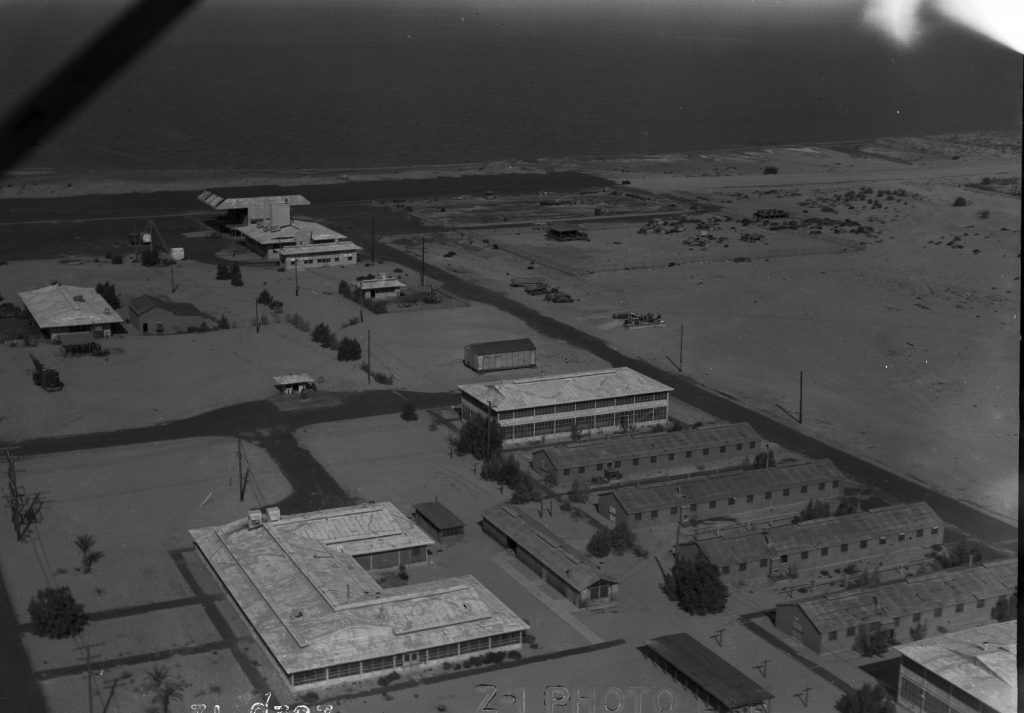
November 13, 1946
Navy transferred Salton Sea test facility to MED
In June 1946, Z Division started using a test facility on the Salton Sea in southern California for ballistic testing of inert (nonexplosive) nuclear weapon designs. Later that year, the Navy Department—which had used the site during World War II—transferred the site to the Manhattan Engineer District. It came under Atomic Energy Commission control when the MED properties were transferred by Executive Order 9816 on December 31, 1946. Sandia used the Salton Sea Test Base until July 1, 1961.
1947
January 1, 1947
Robert Henderson took over leadership of Z Division
Robert Henderson took over leadership of Z Division (he agreed to assume leadership of Z Division temporarily when Roger Warner left in November 1946 to become Director of Engineering for the Atomic Energy Commission). In February 1947, he finished moving the last group of Z Division from Los Alamos down to the Sandia site. That was Z-4, Engineering, of which he was leader. He went on to become a Vice President at Sandia and was known as the Lab’s Chief Engineer.
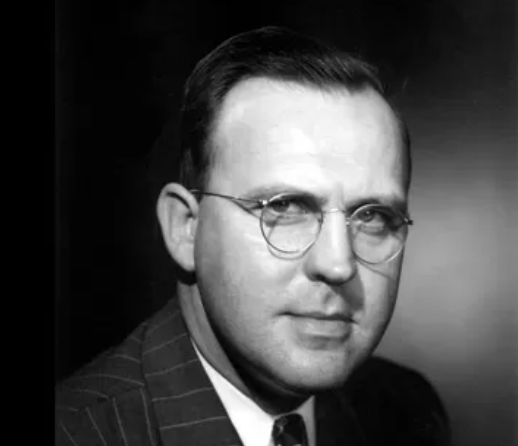
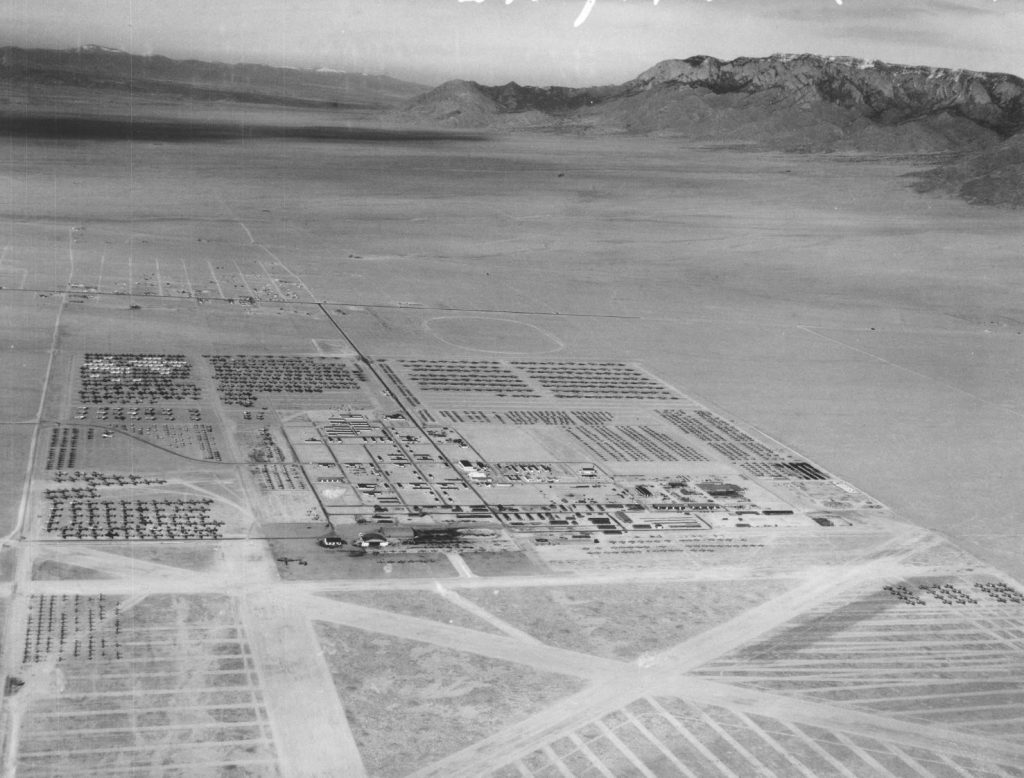
January 1, 1947
Properties and personnel of the Manhattan Project transferred to the AEC
Z Division, as part of Los Alamos, was transferred to AEC control, as was the land it was on and all of its facilities and equipment. Sandia Base was not transferred to the AEC—it remained a U.S. Army base. Thus, the Z Division-occupied land within the boundaries of Sandia Base was under civilian control. In 1971, Sandia Base merged into Kirtland Air Force Base, which is what the base is currently called.
December 4, 1947
Paul J. Larsen assumes leadership of Z Division
Paul J. Larsen of Applied Physics Laboratory at Johns Hopkins assumed Z Division leadership. Tasked to expand Z Division, ensure successful support of the Operation Sandstone nuclear test series in April 1948, and reorganize the division into a semi-independent operation, all while sustaining the central mission activities of production engineering, procurement, surveillance, military liaison, and applied physics. Two years later, personnel numbers were up from 370 to 1720 and permanent floor space increased from 22,000 to 151,000 square feet with 333,000 square feet of buildings under construction and 165,000 square feet ready for bid.
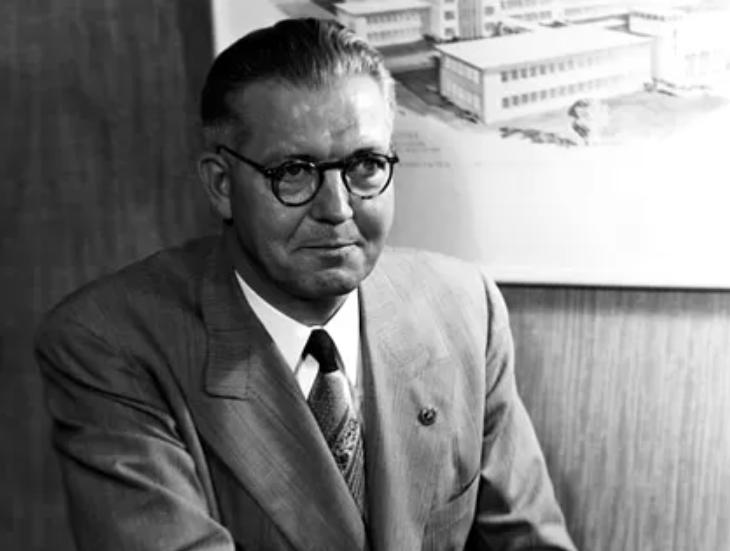
1948
March 23, 1948
Personnel provided stockpile surveillance at nuclear weapon storage sites
Sandia continued to provide personnel at the nation’s nuclear weapon storage sites until 1960. Stockpile surveillance remains a Sandia responsibility.
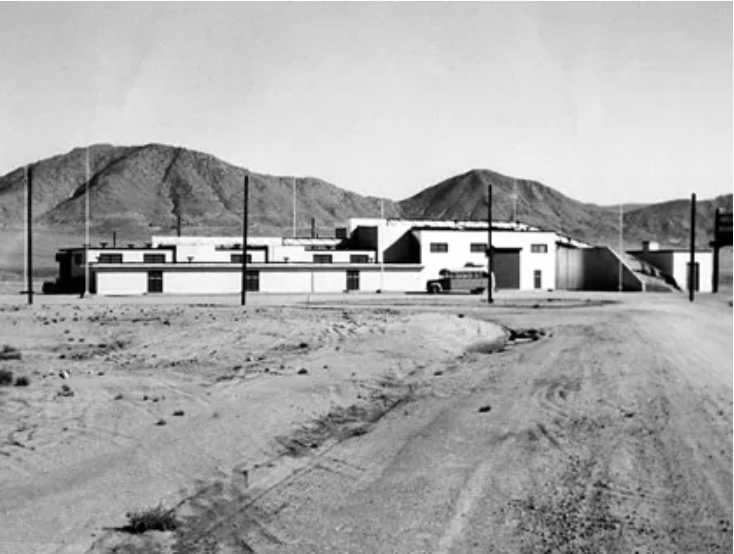
September 1, 1948
Weapon assembly facilities opened
Weapons assembly facilities opened to the south of the main technical area. Even as the new facilities were completed, plans were underway for new assembly sites at Burlington and Pantex in the burgeoning nuclear weapons complex. Nevertheless, Sandia was the primary assembly site for nuclear weapons, 1948-1952. The original vision of Z Division included responsibility for weapon production, including assembly. Shown in the photo, components and sub-assemblies entered the north (left) end of the building and proceeded through a series of rooms, emerging as an assembled weapon (without a nuclear core) from the high bay at the south end.
November 19, 1948
First issue of the Sandia Bulletin released
Sandia Bulletin appeared sporadically at first, then became a weekly newsletter. With the last issue of 1950, it moved from mimeograph to print. It started with news poking a bit of fun at employees and shifted over time to professional activities and some reporting on programs. It opened 1954 as the Sandia Lab News, a biweekly publication. It gradually added more information about technical programs, keeping the different areas of the Lab informed about one another.
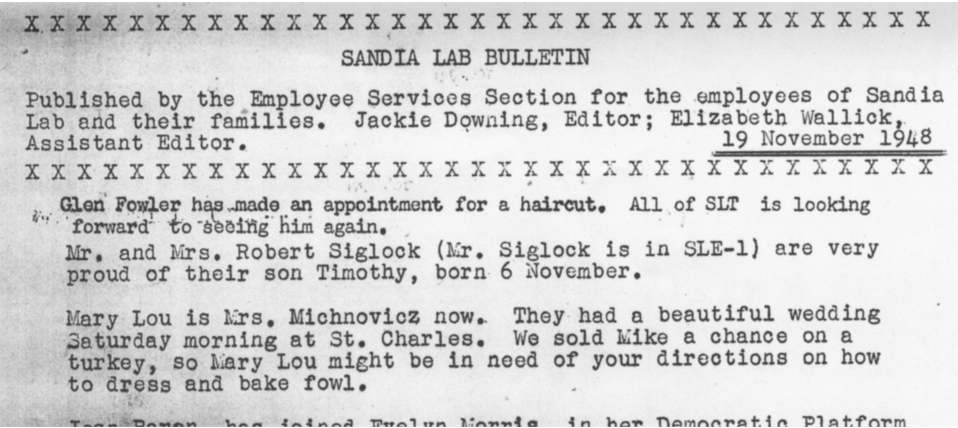
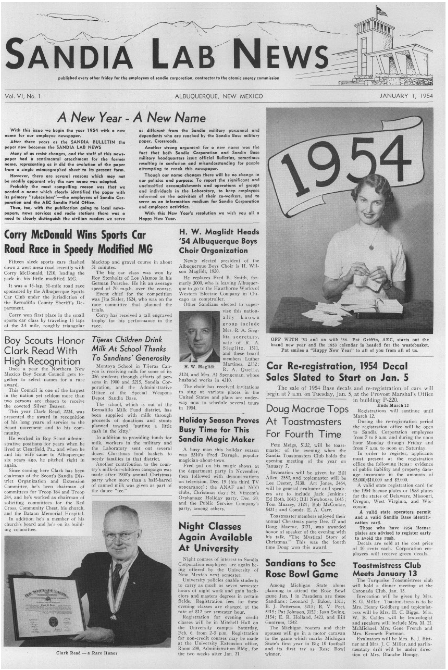
1949
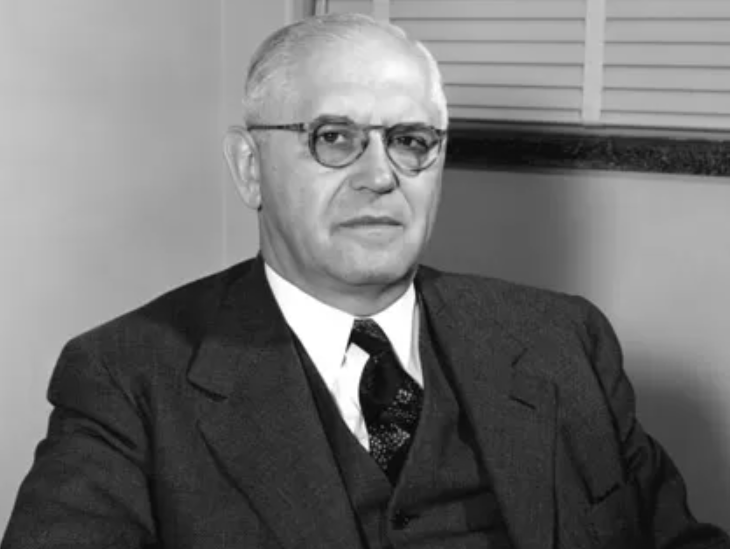
October 6, 1949
George A. Landry named first president of Sandia Corporation
Previously the Operating Manager for Installation at Western Electric, Landry oversaw both the separation of the Laboratory from Los Alamos and the expansion of emergency nuclear weapon production capabilities. An engineer with an extensive background in operations management, Mr. Landry was well equipped to complete Sandia’s support infrastructure, adding functions formerly performed by Los Alamos, such as purchasing and an employee services and public relations department. He established strong ties with the local community and advanced employee support for the Albuquerque Community Chest (now United Way of Central New Mexico). In the face of the Soviet Union’s first nuclear test and the start of the Korean War, Sandia successfully began volume production of new weapon designs on an emergency footing.
November 1, 1949
Sandia Corporation started managing Sandia Laboratory
Sandia Corporation, a wholly owned subsidiary of Western Electric, took over management of Sandia Laboratory. Depicted left to right in the photo: Mervin J. Kelly, Bell Telephone Laboratories; George A. Landry, Sandia Corporation; Bennett Boskey, AEC’s General Counsel office in Washington, D.C.; General James McCormack, Division of Military Application (DMA); Colonel R. T. Coiner, DMA; Donald A. Quarles, Bell Telephone Laboratories; Stanley Bracken, Western Electric Company; Paul J. Larsen, Sandia Laboratory; Fred Lack, Western Electric Company; Richard Smith, AEC Procurement, New York Operations Office; George P. Kraker, AEC Albuquerque.
